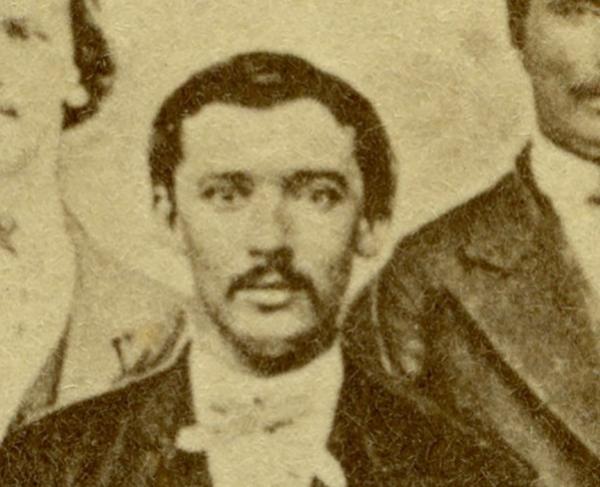Edgar Allan Poe
Recognized as an American literary figure of the 19th Century, Edgar Allan Poe also enlisted in the U.S. Army for a brief period and spent time at coast forts. These locations may have inspired some of his famous writings.
Edgar Poe was born on January 19, 1809. His parents—both professional actors—died, leaving him orphaned at age three. John Allan, a merchant who lived in Richmond, Virginia, raised Poe and ensured that he attended schools to receive a classical education. Though Allan did not formally adopt the young Poe, he allowed him to use Allan as a middle name. In 1815, Poe journeyed to the United Kingdom with the Allan family and attended schools there before returning to the United States in 1820.
By 1826, Poe entered the University of Virginia at Charlottesville. Though he excelled academically, he ran up gambling debts. John Allan refused to pay for the gaming losses, and in financial straits, Poe left the university and quarreled with his guardian. He traveled to Boston, Massachusetts. There, on May 26, 1827, he enlisted in the United States Army for five years of service, lying about his age and using a false name, Edgar A. Perry. Around this same time, he published his first book of poetry, Tamerlane, and Other Poems.
Poe, alias Perry, served in Battery H of the 1st Artillery and was first stationed at Fort Independence in Boston Harbor. In October 1827, the unit transferred to Fort Moultrie on Sullivan’s Island along Charleston Harbor, and Poe headed south. While stationed in South Carolina, he promoted to artificer, emphasizing that he had a mechanical specialty in the battery. Poe’s experiences on Sullivan’s Island and the mainland countryside is recognized as influencing several of his later short stories, including The Gold Bug. He may have written some poetry while at Fort Moultrie, and Poe certainly started looking for ways to get out of the military and pursue a literary career. In December 1828, Battery H transferred to Fortress Monroe, Virginia, with disgruntled Poe still in its ranks. He promoted to Sergeant-Major, the highest possible rank for a non-commissioned officer and likely a testimony to his proficiency.
However, with assistance from John Allan, Poe was honorably discharged from active military service in April 1829 and entered the United States Military Academy at West Point in July 1830. His time at West Point was brief. When Allan refused to provide money to support Poe’s cadetship and refused to sign consent for him to leave the military academy, Poe intentionally ignored his duties and violated regulations to receive a dismissal.
Out of the military but with ideas inspired by some of the places he had served, Poe relocated to Baltimore, Maryland, and continued publishing poetry. He moved in with his aunt, Maria Clemm, and his published short stories gained attention but not enough money to financially support himself. With his aunt and young cousin, Poe moved to Richmond, Virginia, in 1835 and accepted an editorial position for the Southern Literary Messenger. He married his teenage cousin, Virginia Clemm, shortly after they moved.
In the following years, Poe continued to move and take editorial duties with various publications. He lived in New York City and Philadelphia during some of the most literarily productive years of his life. One of the poems most famous during his lifetime— “The Raven”—was published in 1845. Though some of his poems became very popular, Poe was best known for his short stories which often included elements of detective fiction, horror or Gothic. Tragedy also haunted his writings, likely inspired by some of the losses and difficulties of his personal life. Poe’s young wife died of tuberculosis in 1847, leaving him distraught.
Two years later, Poe died in Baltimore, Maryland, on October 7, 1849, under mysterious circumstances. He had been found semiconscious and died four days later without ever coherently explaining why he was in Baltimore or what had happened, leading an array of theories ranging from deadly disease to murder to medical poisoning. Poe is buried at Westminster Presbyterian Church in Baltimore.


